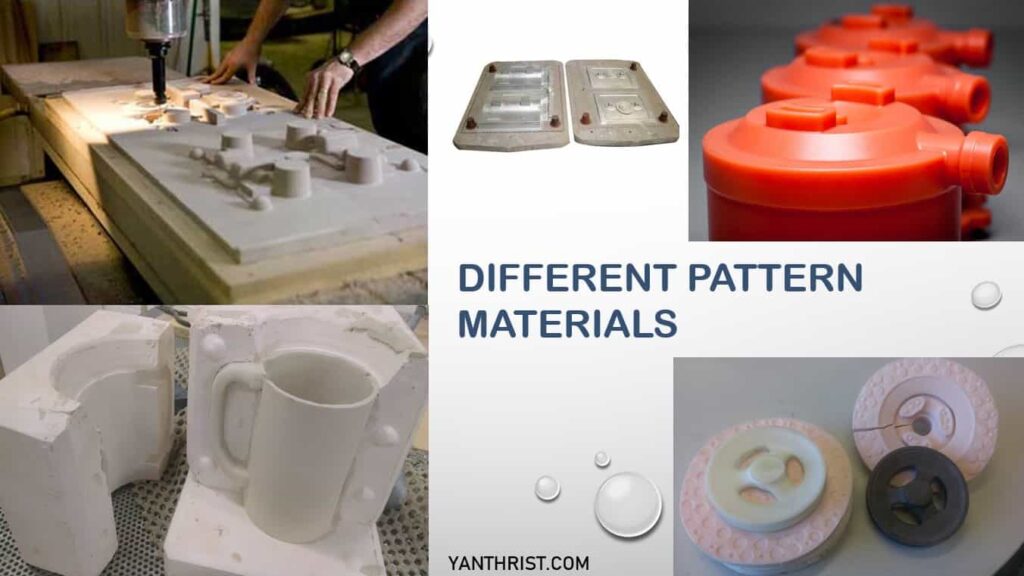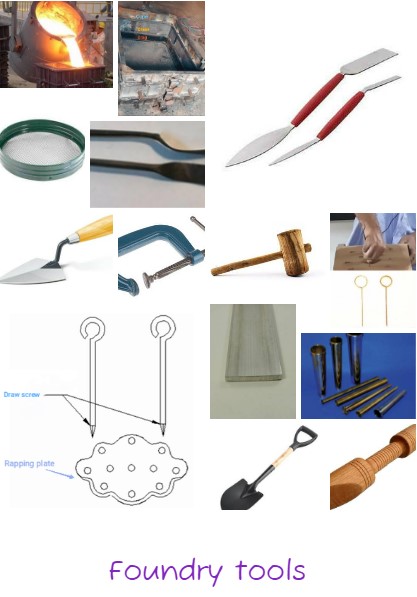Unlock the secrets to smoother machinery with selecting proper Types of Lubricant. From choosing the right oil to maximizing efficiency, our premium tips and methods will keep your equipment running like new. Don’t let friction slow you down – read on to discover the power of proper lubrication, different types of Lubricant used in industry their application.
Table of Contents
WHAT IS LUBRICATION
Lubrication is method of reducing friction, wear, heat generated between two rubbing surface moving against each other. Lubrication made a thin layer between two surfaces that prevent direct contact of surfaces and make it easy to move. The amount of Lubrication and type of Lubricant used depends on the load carried and relative speed of surfaces.

WHY LUBRICATION USED
For several reasons we used Lubrication in machinery, automobile, small mechanical devices. The main purpose of Lubrication is
- To reduce heat generated between two rubbing surfaces
- To reduce friction between moving parts as much as possible.
- To prevent wear
- To reduce noise.
- It also serves as coolant.
- To improve efficiency of machinary and maximize their performance.
- To prevent bearing surfaces from rust, oxidation and corrosion.
Types of Lubricants
A. Solid
Graphite is one of the most popular solid Lubricant. Other examples of solid Lubricant is chalk, talc soapstone etc.
B. Semi liquid
it has comparatively high viscosity than the liquid like Grease. It is used where pressure is high but relative movement speed between parts are less like extrusion, Gear cutting operation, drawing, rolling etc.
C. Liquid
This are classified in following types,
1. Mineral oil-
It’s derived from crude oil. It is a light, transparent, and odorless liquid. It has excellent lubricating properties so used in automotive, industrial Lubricant purpose. As it can withstand high temperatures and pressures it uses in gearboxes, bearings, and hydraulic systems. But remember at very high temperature it also cause engine deposits and reduce lubrication efficiency. Main disadvantages of mineral oil lubricants is that it is not biodegradable and can be harmful to the environment if not disposed properly.
2. Vegetable or fatty Oil-
Vegetable oil lubricants are fatty oil Lubricant made from different vegetable included canola, soybean, sunflower, and others. It’s used in hydraulic systems, industrial gearboxes, and even as engine oils. This is renewable, biodegradable, and non-toxic. They also have good lubricating properties, which can help reduce friction and wear in moving parts.
3. Animal oil-
Animal oils, such as whale oil, seal oil, and sperm oil, were more biodegradable and non-toxic. It’s generally used in food processing industries but main problem is it has a strong odor and not easily available.
4. Synthetic oil Lubricant-
it’s a made from chemical compounds and it has superior performance and long lasting. Rather than other types it can work in extreme weather from -40°C upto 200 °C temperature. It’s widely used in automobile, Heavy industrial machinery, and aerospace applications.
PROPERTIES OF GOOD LUBRICANT:-
1. Viscosity
It’s the most important prime properties for a Lubricant. It defines the degree of fluidity for a Lubricant and reason of oil friction. It’s inversely proportional to the temperature of fluid means as temperature rises viscosity decreases. For this reason in winter season Low viscous Lubricant used. A good Lubricating oil maintains its viscosity over a wide temperature range, gives premium performance in both hot and cold conditions.
2. Oiliness:
It’s a property due to which Lubricant Oil spreads over rubbing surface and make it Oily. It changes with Lubricant’s slipperiness, surface tension and wettability.
3. Flash point-
It’s the minimum temperature of Lubricant oil at which it flash with a presence of an ignition source such as a flame, spark, or hot surface. It should be High to prevent flashing of oil at normal uses.
4. Fire point-
It is that temperature reaches after Flash point at which oil burns continuously called fire point. It should be high to avoid burning of fluid at working time.
5. Cloud point-
It is the lowest temperature below which lubricating oil turns into solid or plastic state makes it look like cloud called cloud point.
6. Pour point:-
It is the minimum temperature at which the lubricating oil will pour means can move or freely circulate according to the need.
7. Low Volatility:-
Low volatility means that the oil should not evaporate easily and does not form harmful deposits or sludge in the engine or machine parts.
8. High Thermal Stability:-
Lubricating oil should resist thermal degradation at high temperatures and does not break down or oxidize easily to avoid formation of harmful acids and sludge.
9. Rust and Corrosion Resistance:-
Good Lubricating oil prevents rust and corrosion of the machine components, when machine is not in use or is exposed to critical environment.
10. Good Water Separation Properties:-
Separation properties means that the oil can easily separate from any water or other contaminants that may enter into system.
11. Anti-Wear Properties:-
Lubricating oil should provide good protection against wear, scuffing, and scratching between moving parts in the machine or engine.
12. Physical and chemical stability:-
Physically it can work under any temperature and Chemically stable means it should not form any other chemical compounds or changes its colour with ageing.
READ ALSO Particulate matter in Air and 4 Controlling Methods.
Lubrication methods:-
A. Force feed Lubrication:-
In Force feed lubrication, oil is supplied to the moving machine parts under pressure and high flow rate. This method is used adequately lubricated critical machine parts. Generally following methods of lubrication is used forced feed Lubrication,
1. Hand pressure feed
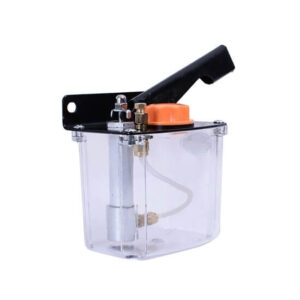
2. Grease cup spring compression mechanism:-
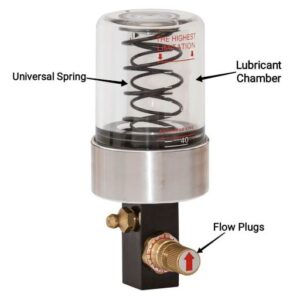
3. Stauffer screw down greaser:-
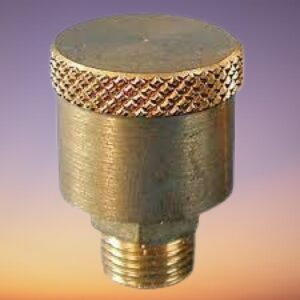
4. Oil Can:-
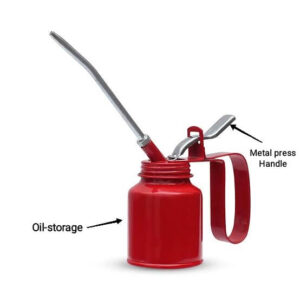
5. Grease Gun:-
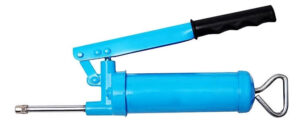
B. Splash Lubrication:-
In this method Lubricating oil fixed in the sump and projecting parts of machine dipped into pool of oil and Lubricate itself. Main advantages of splash Lubrication is it’s low cost, simple mechanism, doesn’t required any external pump. It’s main drawback is that it can’t be used in High speed or high load application. Generally following splash Lubrication is used in machinery parts,
1. Ring Oiling:-
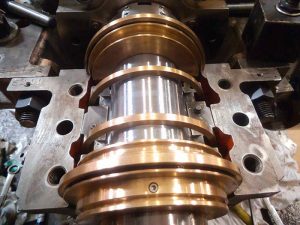
2. Worm gear bath Oiler:-
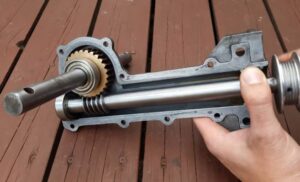
3. Chain Oiler:-
C. Gravity feed Lubrication:-
In this method gravity is used to feed the machine parts slowly with Oil from the storage which placed on a greater Height.
1. Oil Cup:-
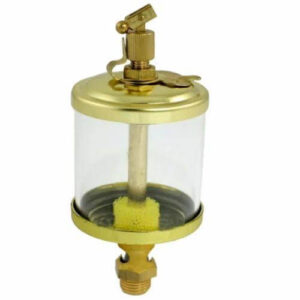
2. Slight Feed Lubricator:-
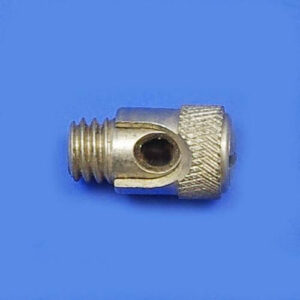
3. wick feed lubricator:-
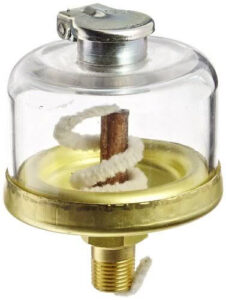
4. winkley oiler:-
References:-

